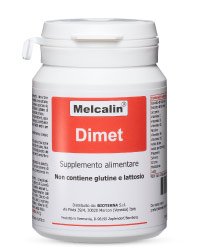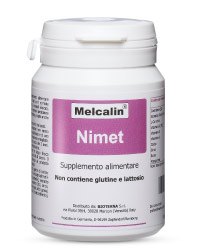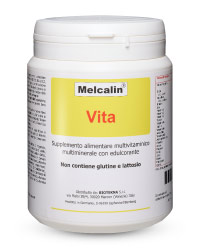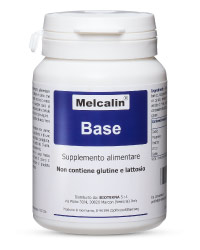Introduction
The World Health Organization defines osteoporosis as a generalized skeletal disorder characterized by the reduction of bone mass and the deterioration of the microarchitecture of the bone tissue that induces increased bone fragility, with a consequent increase in the risk of fracture; the bone regions most frequently involved are the hip, the thoracic and lumbar spine, the wrist and the shoulder. Very often this progressive bone depletion occurs without symptoms, so if specific tests are not performed, this disorder is frequently diagnosed in the event of a fracture, which may result from a minor trauma 1, 2 .
Recently, osteopenia and osteoporosis are seen in a broader picture of alterations in body composition, also controlling the parameters of muscle and adipose tissue: in this overview, a new syndrome has been outlined defined as osteosarcopenic obesity (OSO) (T-score, S-score, IMAT, FM with BioTekna’s Bia-ACC device) which is characterized by the concomitant loss of bone mass, muscle mass and an increase in white adipose tissue in particular the ectopic one such as IMAT..
The most interesting, and even more comforting, fact is that osteoporosis as well as OSO can be prevented and managed with relatively simple and inexpensive health and food education interventions 3,4 and physical-motor.
Efforts to prevent bone loss should begin with proper education that includes a healthy lifestyle, exercise and the intake of calcium, magnesium and vitamin D. Physical activity is important, especially if started during adolescence: this is useful for maintaining good muscle tone and increasing coordination and a sense of balance. Building healthy and robust bones already during the teenage years and then continuing throughout life by keeping risk factors under control and adopting all measures that promote bone health protects against osteoporosis5.
There are also other general measures that help to combat osteoporosis such as following a diet rich in fruit and vegetables, taking an adequate intake of calcium and magnesium, limiting the intake of salt (NaCl), exposing yourself to the sun every day (for at least 10 minutes) to have an optimal production of vitamin D, stop smoking, moderate the intake of alcoholic beverages and undergo clinical tests when indicated1,6, and do regular prevention with simple non-invasive tests such as the BIA-ACC to know able to osteopenia / osteoporosis through body composition analysis that allows you to have a complete view of the possible changes in bone, muscle and fat mass (T-score, S-score, IMAT, FM, BioTekna Bia-ACC device) in order to implement the best nutritional, supplementation and physical-motor strategies.
Supplementation can do a lot in terms of prevention: Melcalin Bone is a supplement that contains Vitamin D, Calcium and Magnesium; the association of the two minerals with Vitamin D was designed to have a synergistic action of the different components useful for maintaining a good bone structure and avoiding the impoverishment of the skeletal tissue.
Magnesium
About 60% of the magnesium in the human body is found in the skeleton; strict control of magnesium homeostasis appears to be of fundamental importance for bone health. Based on experimental and epidemiological studies, magnesium deficiency has been found to have harmful effects on bones. Its deficiency leads to the development of osteoporosis because the mineral has a direct action on the formation of bone crystals and an indirect action by affecting the secretion and activity of the parathyroid hormone; moreover, its deficiency helps to promote the onset of low-grade inflammation. In general, the control and maintenance of magnesium homeostasis is a useful intervention to maintain bone integrity7.
Recent studies suggest that magnesium supplementation helps increase bone density and stop bone loss in 80% of people with osteoporosis. Other studies confirm the thesis that the mechanism by which magnesium deficiency aggravates osteoporosis is multifactorial in nature: due to the influence on the pH of the extracellular fluid and the presence of the mineral in magnesium-dependent enzymatic systems essential for the formation of vitamin D8,15.
Vitamin D
Vitamin D is a lipid soluble vitamin and has a steroid structure. The main biological function of this vitamin is to maintain serum calcium and phosphorus concentrations within the normal range and to promote skeletal mineralization.9
The main source of vitamin D is represented by its synthesis in the skin thanks to exposure to the sun10; most foods do not contain vitamin D: foods enriched with vitamin D contain a variable amount therefore intake with food cannot represent the only source of vitamin D. It has been established that the deficiency of vitamin D is a major cause of bone metabolism diseases in elderly patients: Vitamin D deficiency not only causes osteomalacia, but can also aggravate osteoporosis9.
The activity of vitamin D is complex since it has both a direct and indirect action on bone tissue. Bone and cartilage cells contribute to the formation and maintenance of the skeleton and are sensitive to blood levels of calcium, phosphate and vitamin D, elements necessary for bone formation. Dietary calcium and phosphate can compensate for vitamin D deficiency to some extent, and in turn, vitamin D can compensate for calcium and phosphate deficiencies 11.
The link between vitamin D deficiency and an increased risk of fractures should also be emphasized: the deficiency of this vitamin reduces the ability to absorb adequate amounts of calcium and determines a decrease in muscle strength which in turn causes a decreased stability of the subject. the muscle contains vitamin D receptors which can lead to an increase in muscle strength and an improvement in stability especially when it is administered together with calcium. The confirmation comes from research that has shown that supplementation with vitamin D was able to improve musculoskeletal function and reduce the risk of falling in older women.14.
Calcium
Calcium is an essential nutrient that is involved in most metabolic processes and is present in phosphate salts (hydroxyapatite) which provide mechanical rigidity to bones and teeth. Calcium in the skeleton has the additional role of acting as a reserve to meet the metabolic needs of the body in states of deficiency.
Its deficiency in growing subjects can endanger development and delay the consolidation of the skeleton, while in adults it can cause the mobilization of the mineral from the bone and subsequently can lead to osteoporosis2.
The need to take calcium depends on the different stages of life with greatest need during childhood and adolescence, pregnancy, breastfeeding and in the elderly.
A calcium deficiency at a young age hinders bone development: in adolescents, a deficiency in the mineral intake causes an acceleration of bone loss in adulthood and can contribute to osteoporosis. Supplementation in postmenopausal women and the elderly has been shown to reduce the rate of bone mineral density loss6, 12.
Relationship between minerals and Vitamin D
Magnesium and Vitamin D
Magnesium is essential for the normal functioning of the parathyroid glands, for the metabolism of vitamin D and for having adequate sensitivity of target tissues to parathyroid hormone and the active metabolites of vitamin D.
Magnesium deficiency is usually associated with hypoparathyroidism, reduced production of active vitamin D metabolites, and resistance to parathyroid hormone and vitamin D.
Magnesium also plays an important role in the regulation of calcium homeostasis, therefore attention must be paid to the diagnosis and treatment of any imbalances10.
Calcium and Vitamin D
Some studies have dealt with defining the need to provide calcium supplementation in subjects receiving vitamin D for the prevention of fractures. The results suggest that vitamin D, taken orally, appears to reduce the risk of hip fractures only when combined with calcium supplementation13.
OsteoSarcopenica Obesity (OSO)
A new syndrome defined as osteosarcopenic obesity – OSO (T-score, S-score, IMAT, FM, BioTekna’s Bia-ACC device) has recently been outlined which is characterized by concomitant loss of bone mass, muscle mass and increase of white adipose tissue mainly in ectopic sites such as IMAT.
OSO has multi-factorial causes, it can develop due to the presence of overweight perpetuated by chronic low-grade inflammation, chronic stress, presence of MUS, as well as following an inadequate diet, an incorrect lifestyle or as a result of certain chronic conditions such as cancer, diabetes and other diseases that can cause a neuroimmunoendocrine imbalance, leading to alterations in body composition..
Osteopenia and osteoporosis have always been considered in isolation (without connection to muscle or adipose tissue) as conditions characterized by bone loss with consequent increased susceptibility to fractures however, when there is also a concomitant excess of fat mass and loss of muscle mass, the situation changes since there is a reduction in muscle strength and function, predisposing the subject to the risk of falls and therefore also of fractures.
Monitoring OSO with non-invasive methods (Bia-ACC by BioTekna) represents an advantage in terms of prevention since the knowledge of the problem (lack of bone minerals, decrease in muscle mass or excess fat mass) allows us to understand what the strategies will be better intervention18.
Physical activity
It is known that physical activity is able to improve the bone structure throughout the life, thus decreasing the risk of fractures.
In particular, several studies on postmenopausal women have shown increases in bone mineral in responseto high-intensity training (HIIT) and this has led to define what are the characteristics that physical exercise must have to be effective: it must be dynamic and not static, exceed the threshold intensity, must be relatively short but intermittent, impose an unusual load on the bones, be supported by a sufficient energy intake and an adequate supply of calcium and cholecalciferol (vitamin D3)16; in fact, especially after menopause, the effectiveness of exercise, aimed at improving the bone structure, largely depends on the adequate availability of calcium in the diet..
Other studies have revealed that the rate at which bone mineral density is lost can be slowed by physical activity under management, even in elderly individuals, therefore specific physical activity protocols should be prescribed for the prevention and treatment of osteoporosis and for the general health of the bone system.
More generally, physical activity is necessary to improve and maintain psycho-physical well-being at any age; in particular for osteosarcopenic obesity syndrome (OSO), physical activity is necessary to maintain or improve bone mineral density, to maintain muscle strength and quality, to improve balance, reduce adiposity and ‘inflammation17.
Nutrition
Studies carried out on the Western population have clarified what are the incorrect eating habits that cause a worsening of the bone structure.
The Western diet favors the intake of processed foods, with a high energy content and low consumption of dietary fiber. Over time this can lead to metabolic dysregulation that causes loss of bone and muscle mass, increased adiposity, insulin resistance and the onset of chronic low-grade inflammation that is also fueled by food intake with a high ratio of omega-6 to omega-3 fatty acids (EPA + DHA).
The intake of processed foods that are poor in functional substances leads to a decrease in the intake of nutrients necessary to maintain and develop bones and muscles such as proteins, calcium, magnesium and vitamin D.
It has been found that diets low in calcium can increase circulating 1,25-dihydroxyvitamin D (calcitriol) which is able to stimulate the formation of adipose tissue, furthermore a reduced energy intake and in particular reduced protein intake can cause muscle loss.
As for polyunsaturated fatty acids, the beneficial effects of omega-3 fatty acids on health are well known, in fact eicosapentaenoic acid (EPA) and docosahexaenoic acid (DHA), in particular, have been shown to promote bone formation and reduce the negative effects of adiposity on the bone.
Therefore, the combination of reduced protein intake, calcium, magnesium and potassium deficiencies associated with an excess of carbohydrates and sodium can be associated with osteosarcopenic obesity syndrome (OSO).
Conclusions
The knowledge of the alterations of the main components of the body composition gives a considerable advantage in terms of prevention: knowing if the subject has a deficiency of bone minerals (low T-score), a decrease in muscle mass (low S-score), an excess fat mass (FM) or a combination of several altered parameters (eg IMAT) allows us to understand what will be the best intervention strategies to avoid the development of osteosarcopenic obesity (OSO).
A good lifestyle that includes regular specific physical activity, adequate nutrition and appropriate supplementation can significantly improve bone structure at any age and thus prevent the risk of fractures and complications due to osteopenic or osteoporotic conditions.
A dietary supplement with calcium, magnesium and vitamin D helps to synergistically support nutritional and physical-motor strategies: Melcalin Bone is a food supplement of the highest quality formulated with vitamin D, useful for maintaining serum concentrations of calcium and phosphorus within the normal range and to promote bone mineralization, associated with calcium and magnesium, particularly suitable for the maintenance of a good bone structure as well as to synergistically support the effects of vitamin D.








